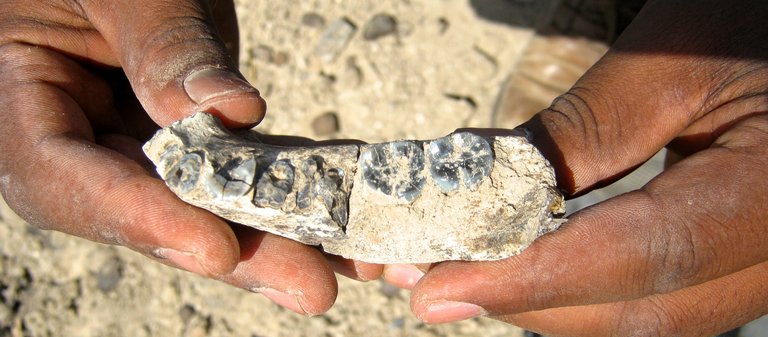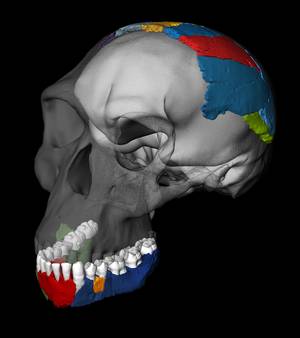The genus Homo has deeper roots than expected

The LD 350-1 fossil found in 2013 in the Ledi-Geraru research field of the Afar region, a piece of mandible with five teeth, is the footprint of the oldest Homo discovered, according to a work published today in online version of the journal Science. Characteristics between the Australopitecos and the Homos. Australopithecus afarensis (Lucy) has a similar primitive chin. The teeth, however, show to be closer to Homos.
The oldest footprint of the genus Homo so far was between 2.3 and 2.4 million years. And only 200,000 years more than the fossil just presented, Lucy has discovered nearby (Hadar, Ethiopia). “We fully trust the age of the LD 350-1 — says Erin N of Penn State University. Dimaggio researchers—, we have used several methods and all say that the fossil is between 2.8 and 2.75 million.”
In a second article published in Science, it explains how it was the environment in which he lived, analyzing other fossils of Ledi-Geraru. Antelopes, hippos, elephants and crocodiles of the same time have been found and have deduced that there were mostly grass and small bushes, as well as some lake. In any case, it was more open and dry than Lucy's residence.
Review of Homo habilis

In parallel, another study published in Natura has reviewed a 1.7 million year fossil called OH 7. Louis Leakey introduced the species Homo habilis 60 years ago from this fossil discovered in the foz Olduvai of Tanzania. The bottom gag of an individual, some fragments of the skull and the bones of the hand are OH 7, but the gag is quite deteriorated and the skull is very fragmented. So far, it has been impossible to compare with other fossils. Now, however, researchers at the Max Planck Institute and College London have rebuilt the fossil with computed tomography and advanced 3D imaging techniques, which has allowed them to make comparisons that could not be made so far.
Thus, they have seen that the gag of OH 7 is quite primitive, more similar to that of Australopithecus afarensis than that of Homo erectus. The skull, on the other hand, is more modern and suggests a brain greater than previously thought, similar to that of H. erectus.
According to the researchers, on the basis of the differences in the jaws it can be affirmed that between 2.1 and 1.6 million years there were three species of Homo: H. habilis, H. erectus and H. rudolfensis. On the other hand, H. habilis, and therefore the genus Homo, have drawn new conclusions on their origin. To date, the ancestor of H. habilis could be an AL 666-1 fossil of 2.3 million years found in Ethiopia. But now they have seen that their characteristics are too modern for it. On the contrary, they propose that AL 666-1 and OH 7 could be representatives of two evolutionary lines that were distributed over 2.3 million years ago.
In fact, their ancestor could be the LD 350-1 they have released today in Science. And it is that he does have the proper characteristics to be the ancestor of H. habilis and other early Homos. “Once digitally analyzed how H. habilis really was, we could deduce how his ancestor was — says the researcher at Fred Spoor College London and the Max Planck Institute — but such a fossil was not known until now. Now, as if we had requested, the Ledi-Geraru gag has appeared, and suggests that there could be an evolutionary link between A. afarensis and H. habilis.”
Buletina
Bidali zure helbide elektronikoa eta jaso asteroko buletina zure sarrera-ontzian











